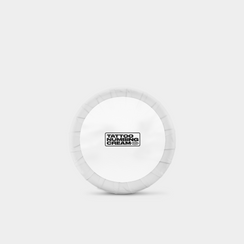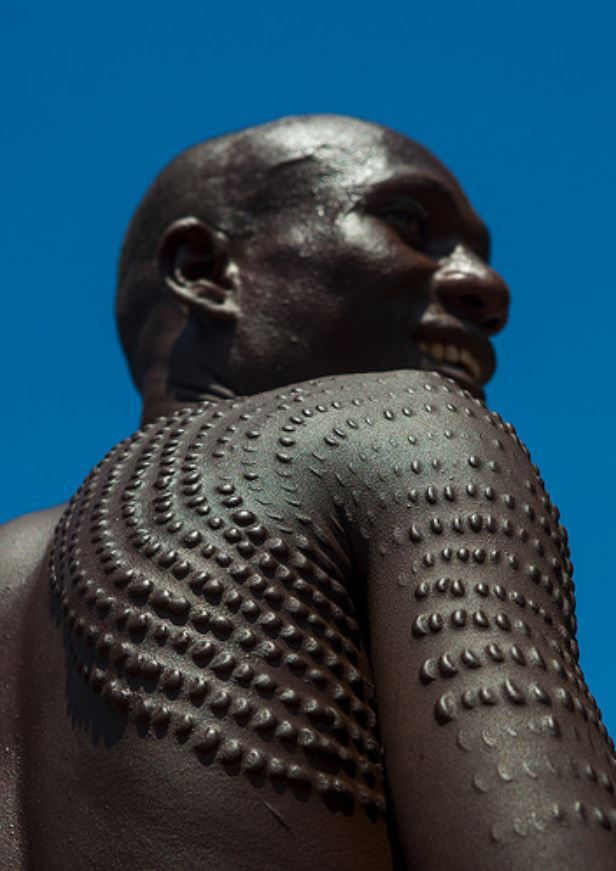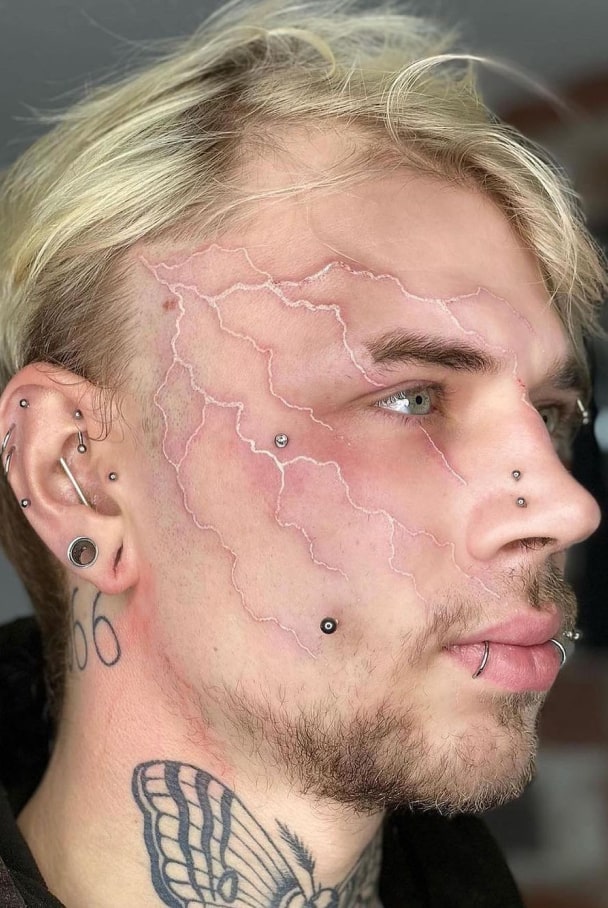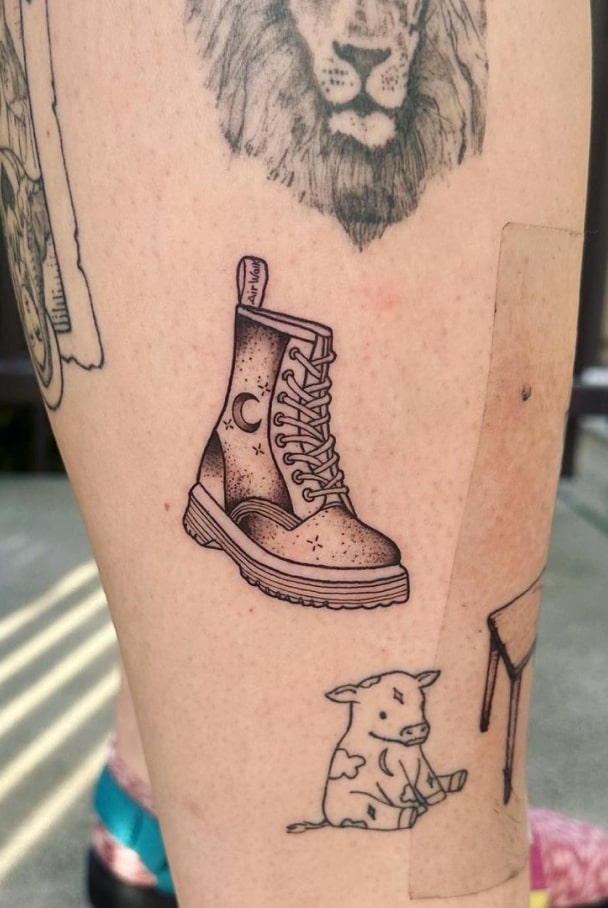Scarification tattoos, often known simply as "scarification," are a form of body modification that involves creating intentional scars on the skin to form patterns, symbols, or designs. While tattoos involve injecting ink into the skin, scarification works by cutting, branding, or removing parts of the skin to produce raised scars. This ancient art form is rich with cultural and spiritual significance, tracing its roots centuries in different parts of the world. Today, scarification remains both a deeply personal choice and a form of artistic expression, appealing to those who seek a unique, permanent way to honor their identities.
What is Scarification?
Scarification involves controlled injury to the skin to create scar tissue in the form of a specific design. Artists may use multiple techniques, including cutting, branding, abrasion, and skin removal (often referred to as "skinning"). While each method involves different approaches to scar creation, the goal is to create a raised, patterned scar that eventually forms a permanent design on the skin.
Unlike tattoos, which use pigments and color, scarification relies solely on the body's natural healing process. The design of each scarification tattoo depends on how the individual's skin heals, which can lead to unpredictable yet uniquely personal results. This unpredictability is often part of the allure, as each scarification design is as unique as the person who wears it.
The Cultural and Historical Significance of Scarification
Scarification has been practiced across various cultures for thousands of years, often carrying significant cultural, spiritual, or tribal meaning. Some of the earliest known uses of scarification were found in Africa, Australia, and Papua New Guinea, where tribes used the art to symbolize rites of passage, social status, and spiritual connections.
For example, in many African cultures, scarification served as a rite of passage, marking a person's transition from childhood to adulthood. These scars denoted maturity and were a way to identify members of particular tribes or clans. In some societies, women undergo scarification as part of their beauty rituals. In contrast, scar patterns represent strength, courage, and resilience in others.
In recent history, scarification has become popular among Western body modification communities. As people search for ways to express their individuality and honor their connection to ancient cultures, scarification has become a powerful form of self-expression. For many, it is a way to reclaim control over their bodies, express personal stories, or symbolize inner journeys.
Scarification Techniques: How It's Done
There are several scarification techniques, each with distinct methods and healing patterns. Here are the most common types:
-
Cutting: This is the most common scarification technique and involves creating an incision with a scalpel or surgical knife. The depth and thickness of the cut impact how the scar will heal, and the artist carefully controls each line to ensure the desired design.
-
Branding: Branding is a more intense scarification method in which a heated tool is pressed onto the skin, burning it to create the scar. As the heat penetrates deeply into the skin, branding often results in thicker, more prominent scars. There are variations of branding, such as strike branding (using hot metal strikes) and cautery branding (using medical cautery pens).
-
Skin Removal: Also called skinning, this technique involves peeling off the top layer of the skin. This method can create a high-contrast look, but it's the most invasive and can require a longer healing time.
-
Abrasion: Abrasion is a more gradual process that involves scraping away the top layers of the skin using sandpaper or similar tools. Although it's less common than the other techniques, abrasion can create unique textures and patterns.
Each technique requires the artist's skill and an understanding of skin healing, as the outcome depends on how the skin regenerates and scars. Finding an experienced and reputable scarification artist is essential for a safe and satisfactory result.
The Healing Process: What to Expect
Scarification is more physically demanding on the body than traditional tattooing, and the healing process is critical for achieving the desired result. Proper aftercare is essential to ensure that the skin heals as intended after the procedure. The goal is to create raised keloid scars, which often involve additional irritation to promote scar formation.
Steps for Scarification Aftercare:
- Cleaning: Keeping the area clean is essential to prevent infection. Most artists recommend cleaning the wound with saline solution and avoiding harsh soaps.
- Irritation Techniques: To achieve a pronounced scar, some people gently irritate the area by rubbing it, using lemon juice, or lightly brushing it to encourage keloid formation. Following the artist's advice on this step is crucial, as over-irritation can lead to complications.
- Avoiding Moisturizers: Moisturizers can inhibit the formation of keloid scars, so keeping the area dry is generally recommended.
- Patience: Scarification can take weeks or even months to heal fully, and the final result only becomes visible after complete healing.
Since everyone's skin responds differently, scarification can yield varied results. Keloid formation, scar thickness, and texture depend on individual healing tendencies, skin type, and the level of aftercare provided.
Why Choose Scarification?
Scarification is not for everyone. However, for those who choose it, it is a powerful form of self-expression. Unlike tattoos, which can be removed with laser treatments, scarification is generally more permanent and unpredictable. This commitment appeals to people who see scarification as a rite of passage, a spiritual journey, or a representation of their resilience.
For others, scarification provides a connection to ancient traditions or a way to differentiate themselves from mainstream aesthetics. Many view it as a reclamation of the body—a permanent, unchangeable statement of self. Because scarification is less common than tattooing, it carries a sense of rarity and uniqueness that speaks to those who wish to mark themselves distinctly.
Scarification and Modern Body Modification Culture
In modern body modification culture, scarification stands as a unique and respected art form. Artists specializing in scarification undergo extensive training to understand skin types, healing processes, and techniques for creating specific designs. The scarification community is often close-knit, with an emphasis on safety, consent, and respect for the art form's historical roots.
It's worth noting that while scarification has gained popularity in Western body modification circles, there are ethical considerations to keep in mind. For instance, adopting cultural symbols through scarification may unintentionally appropriate sacred designs without understanding their significance. Many scarification artists encourage clients to approach the process thoughtfully and respectfully, choosing designs that are meaningful on a personal level.
Is Scarification Right for You?
Choosing to undergo scarification is a personal decision that requires careful consideration. Scarification may be an intense, permanent body modification. Still, it serves as a profound expression of identity for those drawn to it. By understanding the history, techniques, and aftercare involved, those interested in scarification can make an informed choice that aligns with their values and aesthetic goals.
For anyone considering this path, researching reputable artists, understanding the potential risks, and considering the commitment to aftercare is essential. With proper preparation and respect for the art, scarification can be a beautiful, meaningful, and transformative experience.








